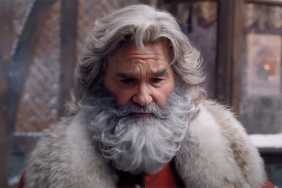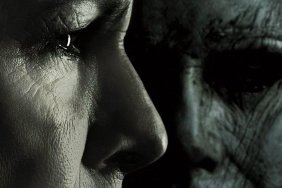On Sunday the 27th, the austere and bent English cult director Ken Russell died of a stroke. And while obituaries were ubiquitous, and the film community mourned the passing of one of the more idiosyncratic directors in British cinema history, it occurred to me that many young cineastes, perhaps only starting out on their path of oddball European classics, may not have yet been introduced to the works of Ken Russell. My own exposure to him began with a reference (which I didn’t entirely get) in an episode of Monty Python’s Flying Circus.
By way of education, I would like to suggest the following films to start you on your path to your discovery of the man, his work, and the bawdy, sex-soaked imprint he left on the world of film. Few directors were as bold, as confrontational, and as controversial as Ken Russell. It’s time we took a dive into the orgy pit.
THE DEVILS (1971)

Even though he had been directing film, TV and documentaries since the mid-1950s, it wasn’t until the ‘70s that the Russell brand really began in earnest. From what I understand, his 1969 film Women in Love was his breakout hit, but I, regrettably perhaps, have not yet seen it. It surely, though, started him on a path of frothy, bawdy sexual frankness not seen in many films up to that point. The earliest of Russell’s films I have seen is The Devils, a Sade-ian and orgiastic series of extreme sexual imagery paired with great fistfuls of religious hysteria and witch hunt madness. Vanessa Redgrave plays the mother superior of a 17th century nunnery, who becomes sexually obsessed with a priest (Oliver Reed), and the dire consequences therein. It’s been a while since I’ve seen it, so the details of the plot are hazy at best, but what I do recall with crystal clarity is the sheer, overpowering chaos of the film. By the time the persecution begins in earnest, and topless nuns begin stampeding, bleeding, and committing murder en masse, you’ll be clutching your gut. Damning, extreme, gorgeously shot, and always unbalanced, The Devils is one of those cult films you always hear about, but rarely get to see. Try to track down the longest version. It’ll be the sexiest and bloodiest.
TOMMY (1975)

Ken Russell had a well-known working relationship with The Who, that bastion of British psychedelic arena rock. Tommy began its life as The Who’s fourth record, an enormously arch concept album about the merry adventures of a young boy who goes psychosomatically deaf, dumb and blind following his witnessing of his mother’s infidelity, and the murder of his stepfather. Tommy then becomes a pop sensation when it is discovered that he is something of a pinball champion. Then he becomes a religious-type figure. Then he recovers his sight, and tries to start a cult. I suppose for a 1968 rock record, this might seem deep, but leave it to Ken Russell to adapt something this whacked out to film. In the movie version, Russell cast members of The Who (Roger Daltrey played the title character), as well as Ann-Margaret as the mother, and Oliver Reed as her lover. There are cameos from Tina Turner, Eric Clapton, Keith Moon, Elton John, and Jack Nicholson in his only-ever musical performance. I need not go too much further than describing the baked beans scene: In one sequence, Ann-Margaret, wearing a white lycra jumpsuit, is watching TV, enjoying the orgy of consumerism the commercials provide. The products advertised begin to leak from the screen. At first, it’s soap bubbles. The room fills with foam. Then a deluge of baked beans pours into the room. Ann-Margaret rolls erotically in the food glop, smearing herself with beans. This is a sight that cannot be unseen.
LISZTOMANIA (1975)

To follow Tommy, Russell, still working with The Who, decided to make this impressionistic faux-biopic of Franz Liszt. Some have said that Lisztomania “out-Tommys Tommy.” Daltrey is back in the title role, as a dandyish lothario who openly has a long series of vocal affairs with both men and women. The film’s central romance focuses on his (completely invented) affair with Richard Wagner (pop star in his own right Paul Nicholas). Russell’s film is full of screaming topless ladies, and he seems to equate the piano etudes of eras past as being directly comparable to the sexual excesses of any of today’s rock stars. The hoard of screaming teenage girls evokes nothing but the gals who lost their panties over The Beatles. Fiona Lewis played Liszt’s real-life lover Marie d’Agoult, but they did not, as depicted in the film, actually marry, nor was Liszt censured by the Pope, played by Ringo Starr. Ringo Starr plays the pope. I thought that bore repetition. Boldly ahistorical, Lisztomania seems like Russell giving himself free reign to indulge in the sexual extremes and period costumes that mark most of his work.
ALTERED STATES (1980)

This was Ken Russell’s only science fiction film (written by Paddy Chayevsky), and it’s science fiction in the way only Ken Russell can do it. Not so much interested in technology, Russell chose instead to go down a hallucinatory rabbit hole, dealing with potent drugs and the power they have on the body. The film is almost Cronenbergian in its themes, but much quicker and more stylish than a Cronenberg film. William Hurt plays a scientist who is conducting a bizarre experiment on himself: he injects himself with hallucinogens, and then locks himself inside a sensory-deprivation chamber where he begins to have elaborate fantasies about proto-humans and the dawn of man. He becomes convinced after a while that he is actually genetically regressing himself into an ape-like form. Even when his devolved ape body breaks free and goes on a rampage, one is never sure if what we’re seeing is part of his fantasy, or if he’s actually mutating. Russell, that playful scamp, never lets us know one way or the other. The film’s finale hurt my brain when I first saw it as a teenager, and I’m not sure if I can explain it to you any better today. Drugs, violence, classy actors, and monkeymen. Thanks, Ken.
THE LAIR OF THE WHITE WORM (1988)

Aside from his 1991 film Whore, which I haven’t seen, this may have been Ken Russell’s most mainstream output, and one of the only ones to get a big-name distributor… if you, like me, consider Vestron Video to be a big-name distributor. Even then, it’s still campy and freaky. Based on one of Bram Stoker’s lesser novels (and aside from Dracula, they’re all lesser, aren’t they?), it tells the story of an aspiring archeology student (Peter Capaldi), a mincing blueblood (Hugh Grant), and their innocent blonde babe counterparts (Catherine Oxenberg and Sammi Davis), who unlock the mysteries of and do battle with a leather-clad, sinewy Eurotrash serpent babe (Amanda Donohoe). What is, on paper, a typical monster setup tilts deliriously into weird territory early on; there’s a flashback scene wherein a gaggle of nuns are raped to death by Roman centurions wearing gigantic codpieces. Gigantic codpieces, you’ll find, are a recurring motif of Russell’s. There’s also another dream sequence where Hugh grant watches two stewardesses erotically wrestle on an airplane. Donohoe, who is frequently nude, chews scenery and lurks about the screen with the panache of a child molester, and the lead actors are all so bloody calm in the face of half-snake monsters that the entire film starts to feel downright surreal at times. This is one of the better horror films that you haven’t seen. Find it.
Actually, find them all. Ken Russell had a unique vision, full of elaborate costumes, sex, nudity and, despite it, a strangely adult view of sexuality that exploitation directors rarely (if ever) have. Rest in peace, Mr. Russell. You’ll have new generations of fans in the future.







